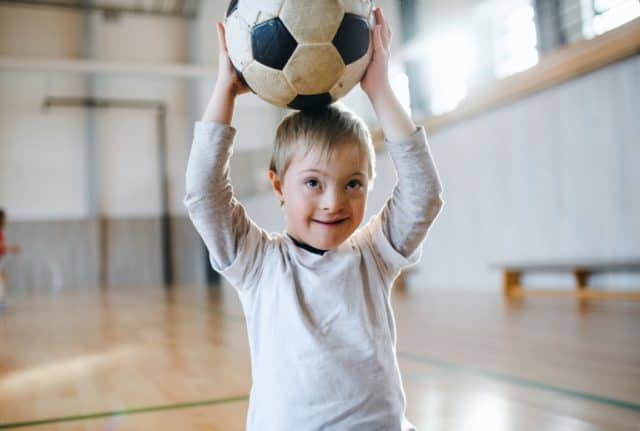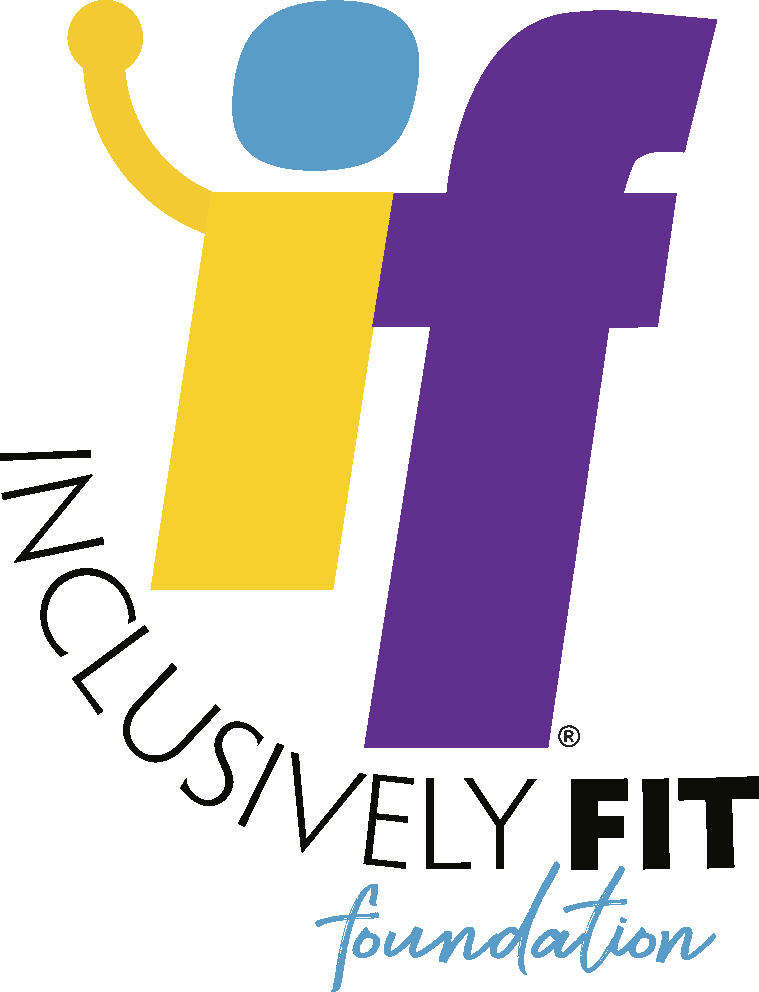
Decreased or poor muscle tone and a propensity to be overweight, and often obese, are some of the typical physical traits of those with Down syndrome. In fact, studies show adolescents and young adults with Down syndrome have reduced aerobic capacities comparable to an adult over 60 years old without disability. Therefore, exercise is not only important, but crucial for individuals with Down syndrome for the numerous physiological benefits that can be gained. We at Inclusively Fit believe that starting an exercise and fitness regimen in early adolescence can set the stage for a healthier life. We’ve seen with many of our Down syndrome clients that addressing the typical physical traits mentioned above, with an individualized exercise and fitness regimen, can make a world of difference. In fact, one of the primary physicians of one of our Down syndrome clients once remarked, “Ryan is the healthiest Down syndrome patient that I have ever cared for in all my years of practicing medicine”.
Inclusively Fit offers one-on-one training and mentoring to young people with this special need. Our fitness center is welcoming and supportive. Everyone feels like they belong here — because they do. And even more importantly, a person in better physical shape will always feel better, even if they can’t express it themselves. We see it, in both their body language and in their eyes.
An Added Benefit to School Age Clients
The founder of Inclusively Fit has a degree in Special Education, has worked as a teacher and has extensive experience with the Individualized Education Program (IEP) process. The IEP is a written document for students with disabilities ages 3 through 25 that outlines the student’s educational needs and goals and any programs and services the intermediate school district and/or its member district will provide to help the student make educational progress. At Inclusively Fit, we work with parents and review existing IEPs to incorporate any applicable goals that could also be focused on during fitness sessions. For example, social goals like taking turns, greeting others, following multi-step directions, answering yes or no questions, etc.
The overall goal here, strongly aligning with our Mission, is to collaborate with our clients, families, and schools to consistently reinforce common goals and help our clients with everyday inclusion.
We’re happy to report, it works.

 Introducing Inclusively Fit, a place and approach to fitness and exercise as unique as the individuals it was created to serve. An organization where everyone understands a person’s physical well-being is strongly connected to their emotional well-being. And that physical accomplishment doesn’t just build stronger muscles, but a stronger sense of self.
Introducing Inclusively Fit, a place and approach to fitness and exercise as unique as the individuals it was created to serve. An organization where everyone understands a person’s physical well-being is strongly connected to their emotional well-being. And that physical accomplishment doesn’t just build stronger muscles, but a stronger sense of self.